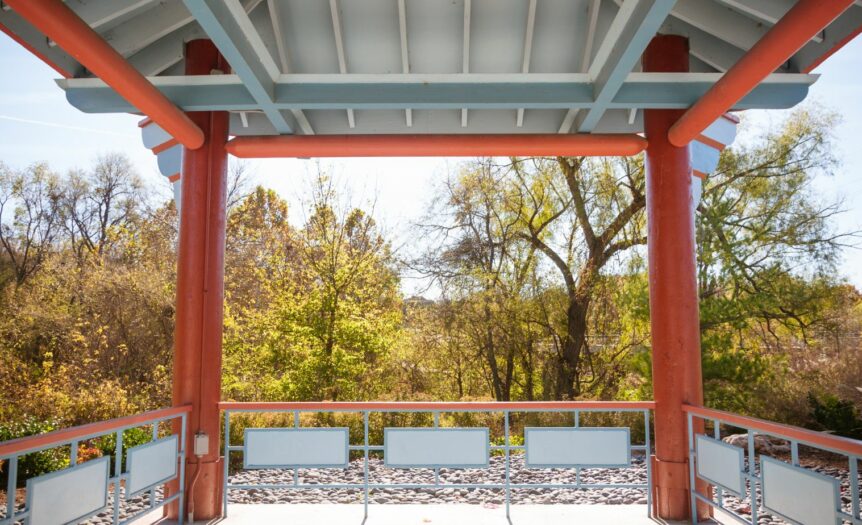Japanese Gazebo
If you’re looking to add a touch of elegance and tranquility to your outdoor space, then a Japanese gazebo might be just what you need. With its unique design elements and cultural significance, a Japanese gazebo can create a serene atmosphere for relaxation and contemplation.
One defining feature of a Japanese gazebo is its traditional architectural style, which often incorporates elements such as low roofs with curved eaves, wooden lattice screens, and open sides. These design elements are not only visually appealing but also serve functional purposes. The low roof provides shade from the sun while the lattice screens allow for gentle breezes to pass through, creating a cool and comfortable environment.
In addition to their aesthetic appeal, Japanese gazebos also carry symbolic meaning in Japanese culture. They are often seen as sacred spaces where one can connect with nature and find inner peace. This concept is known as “shinrin-yoku,” or forest bathing, which emphasizes the therapeutic benefits of spending time in nature.
Whether you have a spacious backyard or a small patio, incorporating a Japanese gazebo can transform your outdoor space into a peaceful retreat. By embracing the simplicity and harmony of traditional Japanese design principles, you can create an oasis that will invite relaxation and rejuvenation.

Different Styles of Japanese Gazebos
When it comes to Japanese gazebos, there is a wide range of styles to choose from. Each style has its own unique characteristics and aesthetic appeal, allowing you to create a serene and harmonious outdoor space. Let’s explore some of the different styles of Japanese gazebos:
- Pagoda Style: The pagoda style gazebo is one of the most iconic and recognizable designs in Japanese architecture. It features multiple tiers with curved or straight roofs that gradually decrease in size as they ascend. These gazebos often have intricate wooden detailing, such as lattice work or carved patterns, adding an elegant touch to any garden.
- Tea House Style: Inspired by traditional Japanese tea houses, this style embodies simplicity and tranquility. Tea house gazebos are typically small structures with low ceilings and open sides that allow for a seamless connection with nature. They provide a cozy space for relaxation and contemplation while enjoying a cup of tea.
- Torii Gate Style: Drawing inspiration from the torii gates found at Shinto shrines, this style combines architectural elements with spiritual symbolism. These gazebos feature a distinctive gate-like entrance adorned with curved beams or pillars on either side. The torii gate style gazebo adds a sense of sacredness and reverence to your outdoor environment.
- Modern Zen Style: For those seeking a contemporary twist on traditional Japanese design, the modern Zen style gazebo is an excellent choice. This minimalist approach incorporates clean lines, neutral colors, and natural materials like wood and stone. With its simplicity and harmony-focused design principles, the modern Zen style gazebo provides a peaceful retreat in today’s fast-paced world.
- Curved Roof Style: Characterized by their gently sloping roofs that curve gracefully downwards, these gazebos exude elegance and gracefulness. The curved roof style creates a sense of flow and movement within the structure while providing protection from the elements. It’s a popular choice for those who want to add a touch of sophistication to their outdoor space.
In conclusion, Japanese gazebos come in various styles, each with its own distinctive features and allure. Whether you prefer the traditional pagoda style or opt for a more modern Zen design, there is a Japanese gazebo style that can enhance the beauty and tranquility of your outdoor sanctuary. Choose the style that resonates with you and create an inviting space where you can relax, unwind, and immerse yourself in the serenity of Japanese-inspired architecture.






